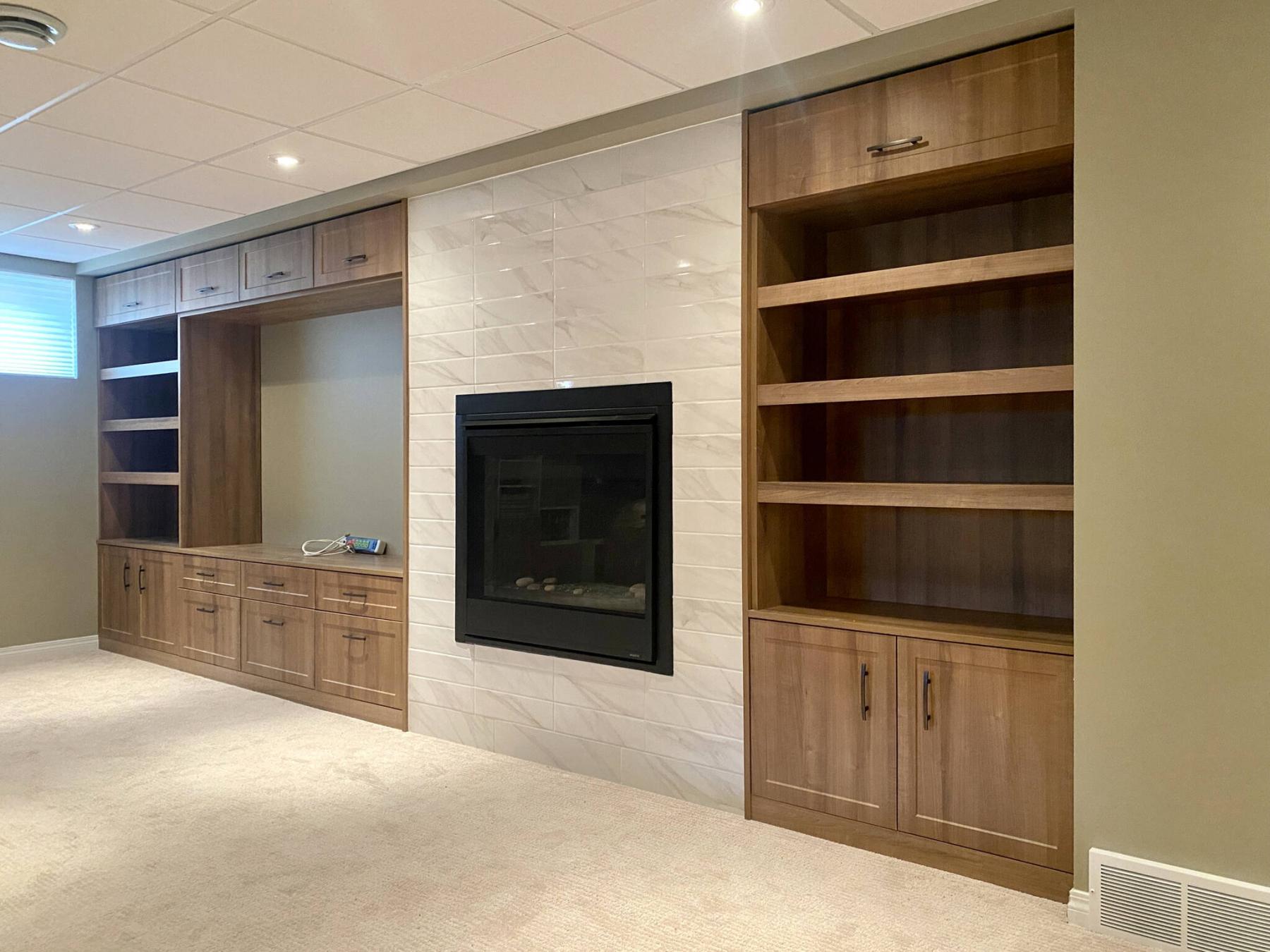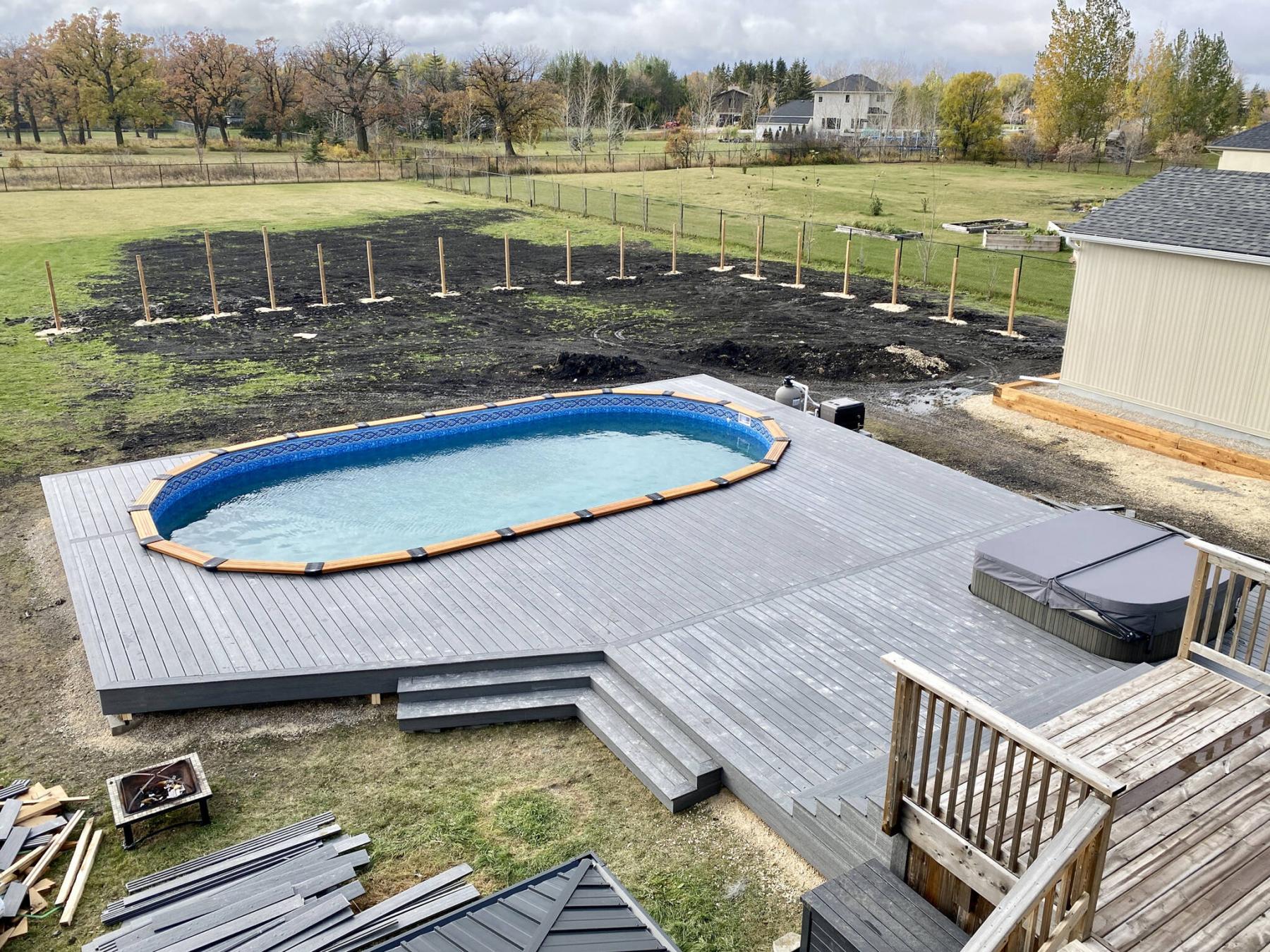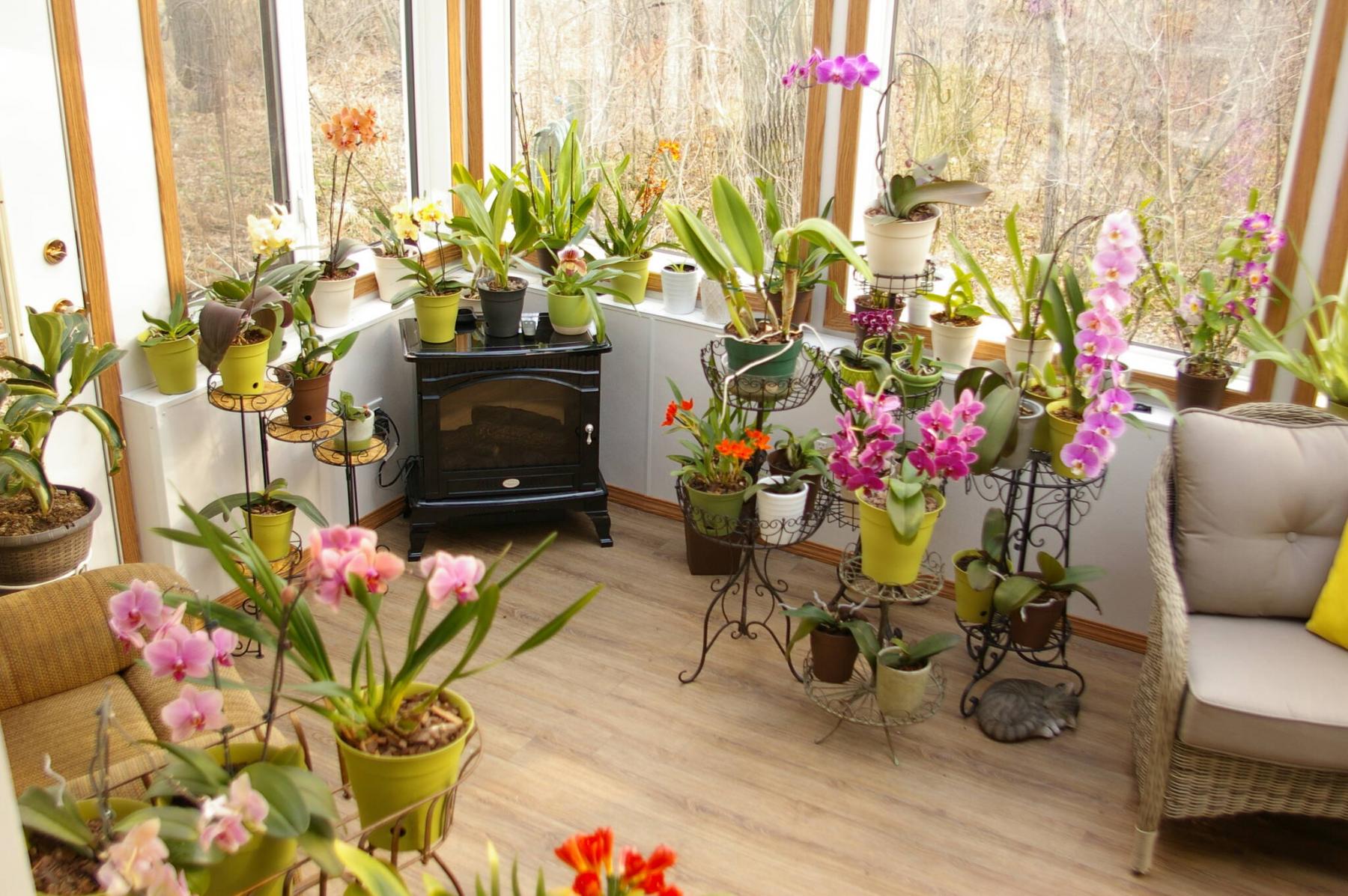Renovation & Design
Renovation & Design
Stopping air leakage in older homes always a challenge
Question: I’m wondering if you could offer a practical solution for an issue which is a real problem in very cold weather. I had the basement, with a poured concrete foundation, insulated with foam a while ago. This was very effective at lowering my gas bill in the winter. However, since then, during extremely cold weather I get ice build up on the baseboards on the exterior walls of the living room. There is also some black mold as well. It improved a lot with use of a dehumidifier but is still a problem. The living room is not insulated. The varnished elm 10-inch baseboards are original and more than 90 years old. I think I need to remove the baseboards to seal the apparent air leaks but am afraid they will crack. I’d prefer to keep them for the character they provide. Any suggestions?
U. F.
Answer: Stopping air leakage in an older home can present a challenge, especially when some portions are well sealed and others are not. Partially sealing the baseboard area may help prevent the frost, but only complete wall insulation and better moisture management may stop it from reoccurring elsewhere.
Insulating your older foundation with spray-on foam will be a very effective way to warm up the basement and prevent excessive air and heat loss, especially above grade. One of the most difficult areas to achieve a good air seal are the cavities near the ends of the joists, at the top of the foundation walls. This is especially difficult in our area, where the ends of the joists are typically embedded in the concrete walls, with no true rim joist. After years of drying out and shrinking, there can be significant gaps, which may let cold air easily infiltrate this space. Spraying foam into these pockets is the best way to ensure complete air sealing and prevent drafts along with heat and air loss in cold weather.
While that upgrade you have wisely done will do a great job below the main floor sheathing, it will do nothing for the area above. That area is where the main floor exterior walls are built on top of the foundation and floor joists. As that older fir framing and sheathing, outside siding, trim and inside plaster dries out there can be some fairly large gaps where air can move in and out of the wall assembly. Especially underneath the bottom wall plate, which is the area directly behind your large, beautiful wood baseboards, significant gaps can develop. This is the most likely cause of the frost buildup, as the moist indoor air comes in contact with the freezing cold winter air penetrating these cavities.
While this can seem like a strange comment, your above average efforts to insulate the basement with spray foam may actually have increased the chances of frost buildup in other areas of the home. If you also have upgraded doors and windows, as well as attic insulation, the chances of isolated problems will further increase. The reason for this is that when the entire building enclosure was poorly insulated, after its original construction, large areas of air leakage were present throughout the house. In that situation you had more air leaking in and out of the living area, but at much lower pressure through each of the multiple large breaches in the building enclosure. Since eliminating these from the large basement area, you have significantly cut down on the volume of the air gaps. If you have retrofitted new windows and doors, the large, poorly sealed spaces integral with those old units have also been closed. So, the smaller number of remaining air gaps are subject to much higher individual air pressure. That can lead to less problem areas of air leakage, but larger noticeable problems at the remainder of the offending air gaps.
This is a common problem, which is rarely communicated beforehand by the contractors and the energy conservation organizations promoting the upgrades. This may also be compounded by another biproduct of the energy-saving retrofits. Because the air that used to easily leak out of the living space often has a high moisture content, a leaky old home would normally be very dry in the heating season. Now that the air leaks have been minimized, that humid air will stay in the home, increasing the relative humidity (RH). Since the RH is higher in the indoor air, it is easier for condensation to occur when that moist air hits spots of cold air infiltration, like the area under your baseboards. The answer to that issue is to take extra measures to reduce the RH in the home, now that is more airtight. Your dehumidifier may help somewhat, but dryer indoor air can better be accomplished by installing and using exhaust fans in the most humid areas, like the bathrooms and kitchen.
The only reason to remove the baseboards would be if you were going to insulate all the exterior walls. Doing only the living room would possibly relocate the frost issue to another area, where there are also some larger gaps for cold air to leak in. You may be better off to take off the quarter-round moulding at the bottom of the baseboard, if there is one, and drill small holes in the bottom of the baseboard. Then, you could blow expanding foam from a can into the small space below the wall cavity, or gap under the wall, with the straw inserted into the small hole. Once cured, the quarter-round could be reinstalled, or replaced if damaged, with the gap in that area sealed. You may have to do this in several areas around the house, but it may be an effective way of sealing the worst areas and stopping the frost formation.
Completely keeping your home condensation and frost free during cold winter weather may require a major exterior wall insulation job. Reducing your RH and air sealing the problem areas behind the baseboards may provide a more localized and immediate solution to the worst areas, in the short term.
Ari Marantz is the owner of Trained Eye Home Inspection Ltd. and a Registered Home Inspector (RHI)(cahpi.ca). Questions can be emailed to the address below. Ari can be reached at 204-291-5358 or check out his website at trainedeye.ca.
trainedeye@iname.com
Renovation & Design
Freeze chocolate for no-static shavings in cappuccino
Question: I have a block of Callebaut chocolate which I shave for sprinkling on cappuccinos etc. I have tried a potato peeler and a handheld grater for this purpose, but both cause static electricity shavings everywhere! Is there anything I can do to prevent the static? Thanks. —Jeanne
Answer: Ah, one of my favourite subjects! Begin by freezing the chocolate for 30 minutes. Chill the dish that you will grate the chocolate onto. Spread a little margarine or butter onto the grater. Spray the grated chocolate with a small amount of water. It won’t fix the issue, but it will reduce the static. The harder the chocolate, the better the results. You can also use a sharp, serrated knife to form perfect, clean chocolate shavings. Lay the chocolate onto the counter and place the blade teeth onto the chocolate, pull the knife towards you, repeatedly, for perfect little curls.
Question: We had a gas fireplace installed five years ago. It is running well with no issues at all. Is there anything that I should do for general maintenance, or are they self-sufficient appliances? —Fred
Answer: Regular maintenance on your gas fireplace should be completed annually, whether it seems to need it, or not. Schedule an appointment with a certified gas service provider. They will check to make sure the unit is working properly, and safely, service the batteries, and clean the fireplace. This should not be completed by the homeowner.
Question: I cooked chocolate pudding from scratch. While it was hot, I put it in the fridge to cool, but it would not thicken up, so I threw it in the garbage. Is there anything I could have done to save my dessert? —Joyce
Answer: Yes definitely. Next time, pour one quarter cup of milk into a cup and add three tbsp. cornstarch. Stir to dissolve and add the milk to the pudding. Bring to a boil while stirring. The pudding will thicken to the proper consistency.
Question: I purchased a used couch, and when I removed the cushions to clean, I noticed gum stuck on the bottom of the cushions. How can I remove ground in chewing gum? —Charles
Answer: Pile ice onto the gum, wait for 10 minutes until the gum has hardened. Peel it with your fingers or a plastic spatula. You can also spread, smooth peanut butter, or mayonnaise onto the area; work it onto the mess. The gum will become oily and easy to remove. After it is gone, clean the area with dish soap and water.
Household Hacks
I save dryer lint and stuff it inside empty toilet paper rolls to make my own kindling. These are perfect for starting bonfires outside. —Terrance
Make your own canvas bag or shoe, cleaner. Combine one tablespoon of Dawn dish soap and one tbsp. three per cent hydrogen peroxide. Wipe onto shoes and scrub with a soft toothbrush. Wipe off with a wet dish cloth. —Salver
To help your ground beef go further, add a freshly chopped mushroom. Mushrooms are less expensive and easy to find at the store. —Jemima
I took a flight to the U.S. and had extra clothes that I couldn’t fit into my carry on. I stuffed them into a pillowcase to make a pillow and the airline didn’t charge this as an extra carry on. I don’t know if this would work for all airlines, but I was happy and wanted to share my experience! —Denise
Note: Every user assumes all risks of injury or damage resulting from the implementation of any suggestions in this column. Test all products on an inconspicuous area first.
Have a great suggestion or tip? Send it to reenanerbas@outlook.com.
Renovation & Design
Try alcohol and water for streak-free glass
Question: What is the best way to get mirrors and glass doors clean and streak free? Carol
Answer: Into a spray bottle combine one-third cup rubbing alcohol with two-third cups water. Clean with a soft, excellent quality microfiber cloth.
Question: A while back I used a plumbing “snake” to unplug my toilet. Sadly, it scraped the porcelain and left horrible grey marks. I have tried many cleaners, but nothing got it back to it’s original white. Thanks for your help. Barb
Answer: This is a common issue and many people have had excellent results by cleaning the toilet bowl with Bar Keeper’s Friend. Apply the product onto a non-scratching abrasive pad. Leave for 10 minutes and scrub.
Question: I bought a brand-new salt and pepper shaker set to place in the middle of my brand-new dining room table. The set is quite nice, but I find that the holes of the salt shaker were made too large. Salt pours out of the holes very quickly, and I end up over salting my food. Do you have any ideas in your bag of tricks as to how I can fix the shaker? Edward
Answer: Replace table salt with coarse salt so that each grain is larger, making it more difficult for salt to pour out of the shaker. Also, store rice inside the saltshaker to prevent the salt from clumping. If all else fails store something besides salt in the shaker such as cinnamon, sugar or baking soda.
Solutions galore
For people who use a plastic dish rack, here is an easy way to de-gunk it without having to use a scrub brush. Fill the kitchen sink full of hot water. Add a few drops of dish soap and stir in about two-third cups of bleach. Immerse the dish rack and let it soak for an hour. The gunk will lift right off. Rinse the rack with hot water. Cheers! Vincent
I use make-up pads that come in a plastic sleeve. When reaching the centre of these sleeves, I was having difficulty grabbing the pad, so I came up with a solution. I push the pads toward the top of the sleeve/tube, twist it, then tie it with a twist tie. Now the pads are once again at the top of the sleeve/tube and easy to get at. Ann
Next time you cook fajitas, add cooked pork, peppers, onions and seasoning to your baking pan. Next, cook powdered onion soup and water on the stove. Thicken soup with cornstarch (the way that you would gravy). Add this to the fajita pan for great flavour and texture. Mae
For fluffier boiled potatoes, pour off all the water after they are boiled and cover the pot with a double thickness of paper towels, then cover with the saucepan lid. In ten minutes, steam will be absorbed by the towels and your potatoes will be dry and fluffy. The idea behind cooking potatoes with the lid left ajar is to cook the potatoes in less time while preventing the water from boiling over. Terry
To cook cabbage, plunge the cabbage into a pot of boiling water, cover the pan only until the water returns to a boil. Remove the lid and let the cabbage cook gently until tender and still a vibrant color. Terry
Here is my best hack! The best and easiest way to crack an egg is to drop it directly into the frying pan. It cracks in half, cleanly. Ananya
Note: Every user assumes all risks of injury or damage resulting from the implementation of any suggestions in this column. Test all products on an inconspicuous area first.
Have a great suggestion or tip? Email reenanerbas@outlook.com








